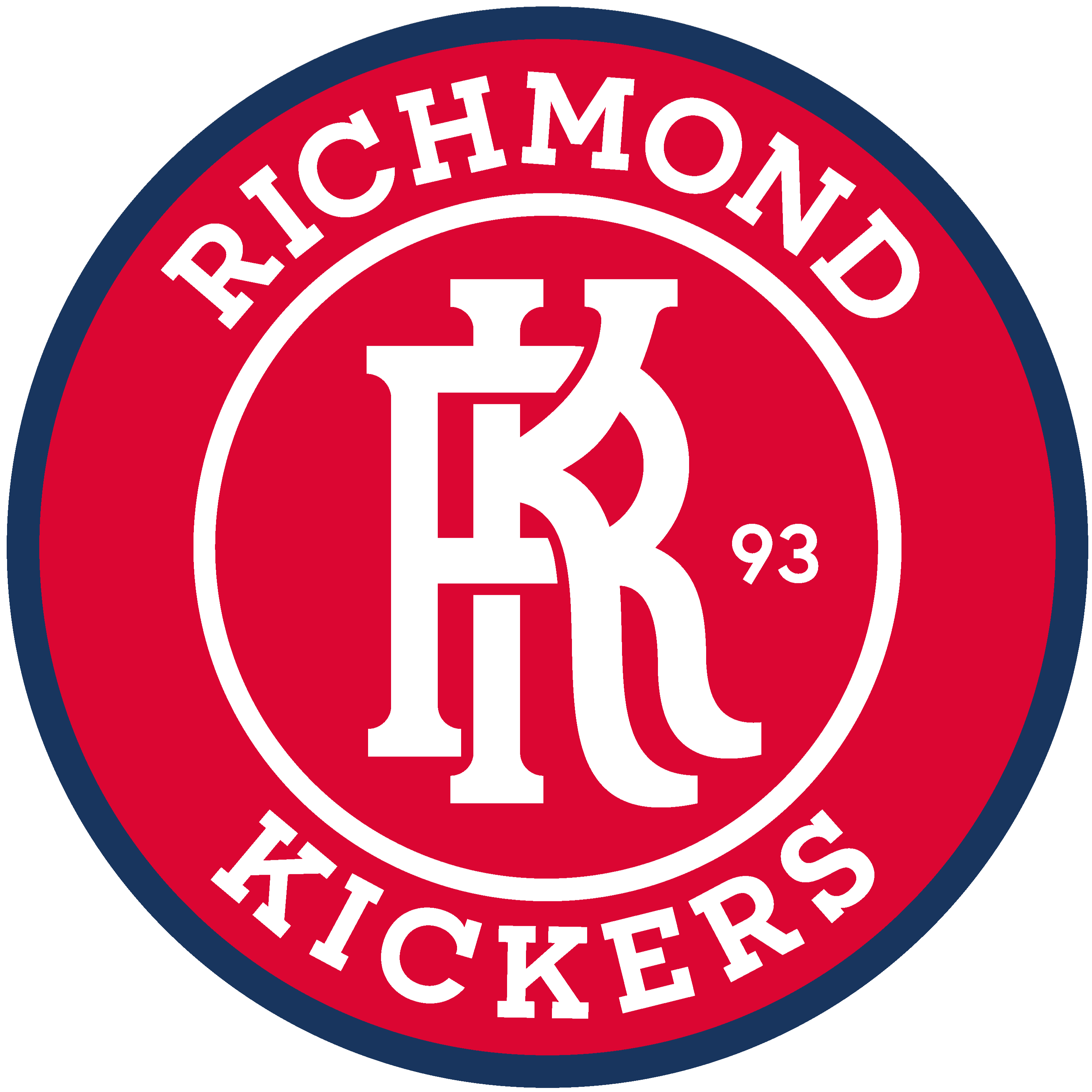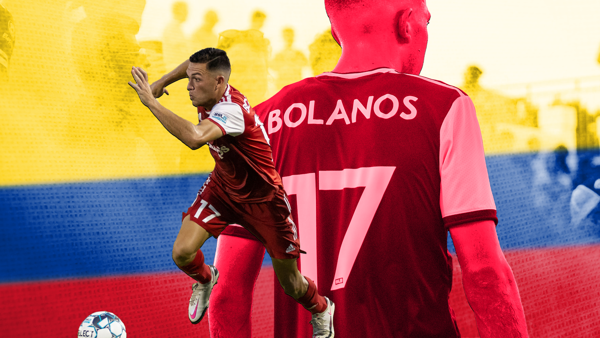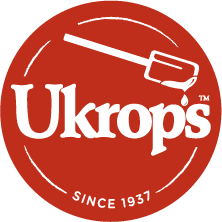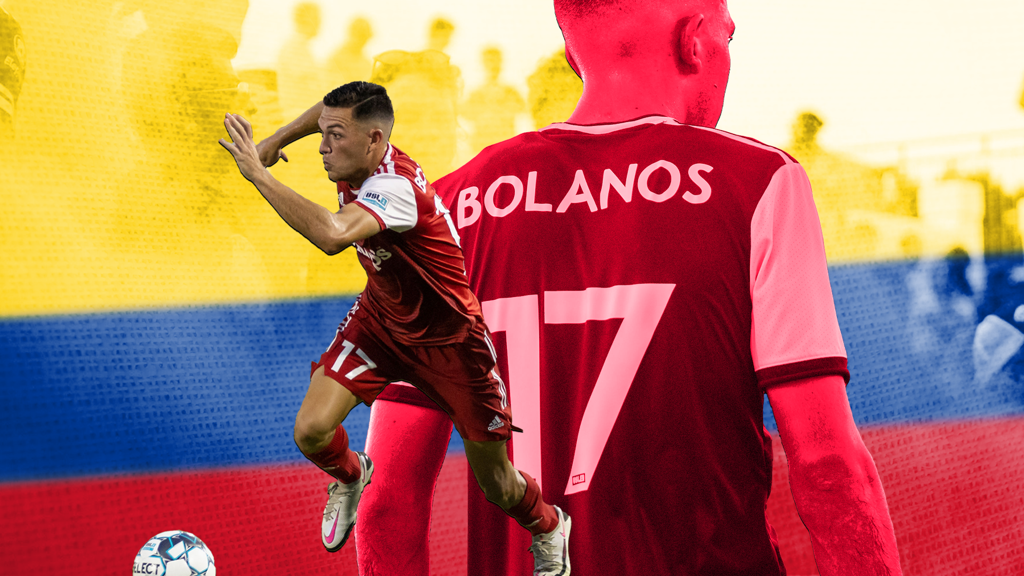
Hispanic Heritage Month is a brief window of time from September 15 through October 15. While one month allows the uninitiated to catch a glimpse of the cultural allure and traditions of Hispanic cultures, it certainly is not enough time to fully grasp the magnitude of the impact Hispanic culture has had on America. From the many exquisite dishes and the unique instrumentals in their music to the animated dancing styles and boisterous family gatherings, the Hispanic culture spans over 20 countries and no one is the same.
The Richmond Kickers are proud to celebrate and cultivate an inclusive culture amongst fans, players, coaches and staff alike. We sat down with Jonathan Bolanos, the South Florida-born Colombian-American winger who is enjoying his second professional season with the team, to discuss Colombian food and soccer, how he connects with his heritage and roots, and the meteoric rise from his humble beginnings.
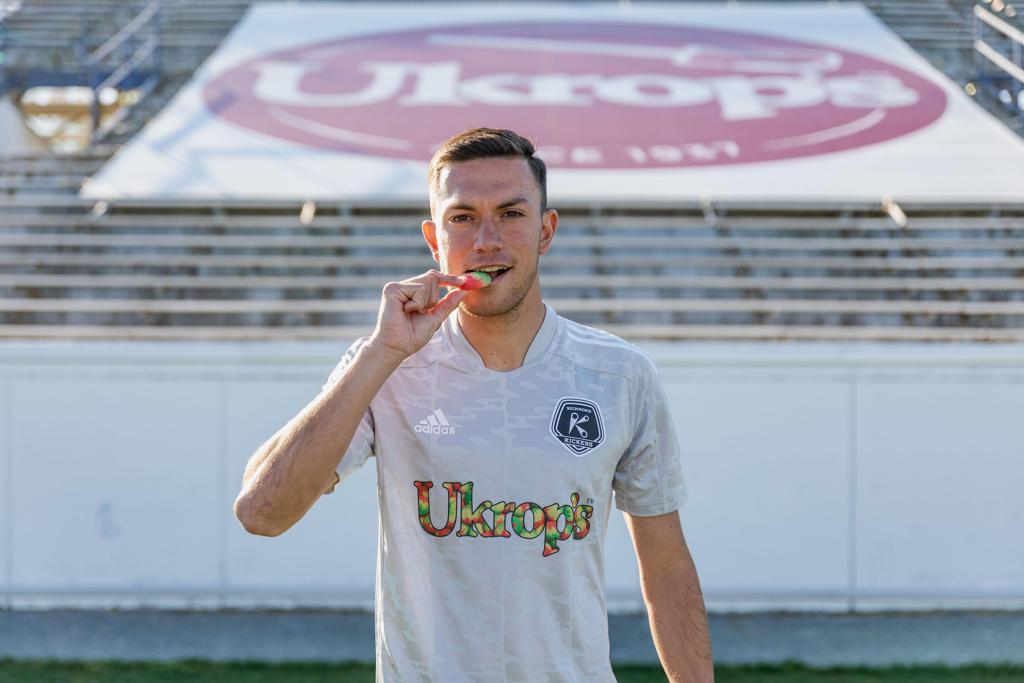
Jonathan Bolanos grew up in an intersection of Hispanic cultures; his Colombian heritage and his upbringing in South Florida, which is famously known as a melting pot of many different Hispanic and Latino cultures. Bolanos was raised in Pembroke Pines, Florida just under 25 miles from Miami. The geographic distance between Pembroke Pines and Miami pales in comparison to the reach that the South Floridian Hispanic culture has over the lower half of the state.
Bolanos played club soccer for Kendall Soccer Coalition, a club team in Kendall, Florida, a community that spans mostly suburban areas in western Miami. According to Bolanos, the culture in Kendall was indistinguishable from Pembroke Pines. Teams full of different cultures, Cubans, Colombians, Haitians, and other Caribbean backgrounds were all over South Florida. So, from the perspective of a young soccer player with a family from Colombia, Hispanic culture was never lacking in his childhood.
I think one thing that stood out for me is that after the Kickers games, I’ve had a couple of fans recognize just from my last name that I’m Hispanic. So, they’ve been able to speak Spanish and reach out after the games, and that’s been huge. Just to connect with the fans like that and have some fans that I could speak Spanish with and connect like that on a cultural level has been great.
Many Hispanic cultures are praised for their food; Cuban sandwiches, Mexican burritos and tacos, Dominican rice and beans, the list goes on and on. But, for Bolanos, food is more than just another meal, food is a way to connect with his heritage, and, more so now that he is away from his family, a way to connect with home and the thing that makes him, Jonathan Bolanos.
“I think one of the main things was always the food, as well as the music, that area, the food, you have Colombian restaurants all over the place,” Bolanos said, “No matter the city in South Florida, I think with the diverse culture down there and the amount of Colombians you have there it seemed like there was a Colombian restaurant on every corner.”
Bolanos’ smile grew bigger as he spoke about his favorite Colombian dish, bandeja paisa, which literally translates to Paisa platter, regarding the Paisa region in northwest Colombia. The platter typically consists of red beans cooked with pork, white rice and two or three different types of meat, typically chicharrón (fried pork belly), carne molida (ground beef) and carne asada (grilled skirt steak).
Alongside the mountain of meats, rice, and beans, is usually an avocado, a fried egg and a small arepa, usually made from maize dough and formed into a sort of thicker pancake with more of a savory flavor. The bandeja paisa is a signature Colombian dish akin to barbecue in the Southern United States. If you ask just about any Colombian what the most famous, or probably what their favorite dish is, they are likely to mention the bandeja paisa somewhere in the running.
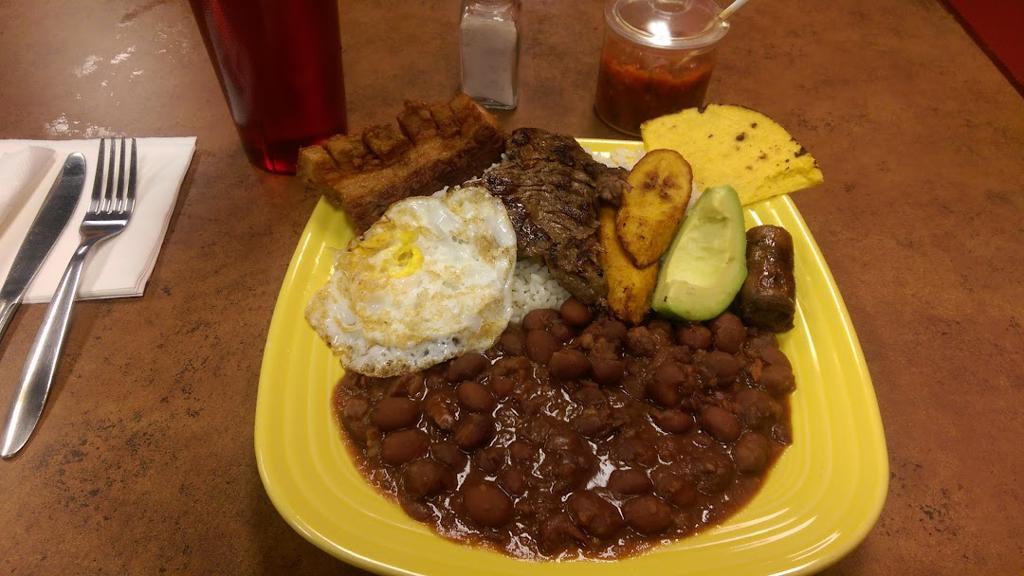
Bolanos cherishes his culture and his family away from home through food whether it’s making it himself or finding it at a restaurant nearby. However, in Richmond, Virginia, nearly 1,000 miles north of his hometown, Colombian spices and foods aren’t as easy to come by.
“It’s not as common to find even in the supermarkets here, your Spanish ingredients,” Bolanos said. “If I wanted to make something that hit home, I’d talk to my parents and ask them maybe for a recipe and try to get some ingredients up here, but it is definitely more of a challenge than down there [in South Florida].”
Bolanos praises a local restaurant for being the closest thing he can get to an authentic, Colombian meal, bringing him closer to his roots.
“It’s been nice because I’ve been able to find a couple of Colombian restaurants and bakeries in the area that have helped me feel like I’m at home in a sense…one is called Cafe & Sabor Bakery And Restaurant,” Bolanos said.
Cafe & Sabor is located in Midlothian on Hull Street Road, where there is a large contingency of Hispanic cultures hailing from El Salvador, Mexico, Guatemala, and Honduras. Bolanos enjoys his Colombian food, occasionally a bandeja paisa, and even sometimes catches a Colombian international game.
“I’ve actually been there to watch a couple of Colombian soccer games as well, so having a Colombian dish while watching a Colombian soccer game, you can’t go wrong with that,” Bolanos said.
Although food is a primary source of Jonathan Bolanos’ connection to his heritage, the support from local Hispanic communities, be it from Hondurans, Mexicans, or Guatemalans, has brightened his time in Richmond and even given him additional opportunities for cultural connections.
“I think one thing that stood out for me is that after the Kickers games, I’ve had a couple of fans recognize just from my last name that I’m Hispanic,” Bolanos said. “So, they’ve been able to speak Spanish and reach out after the games, and that’s been huge. Just to connect with the fans like that and have some fans that I could speak Spanish with and connect like that on a cultural level has been great.”
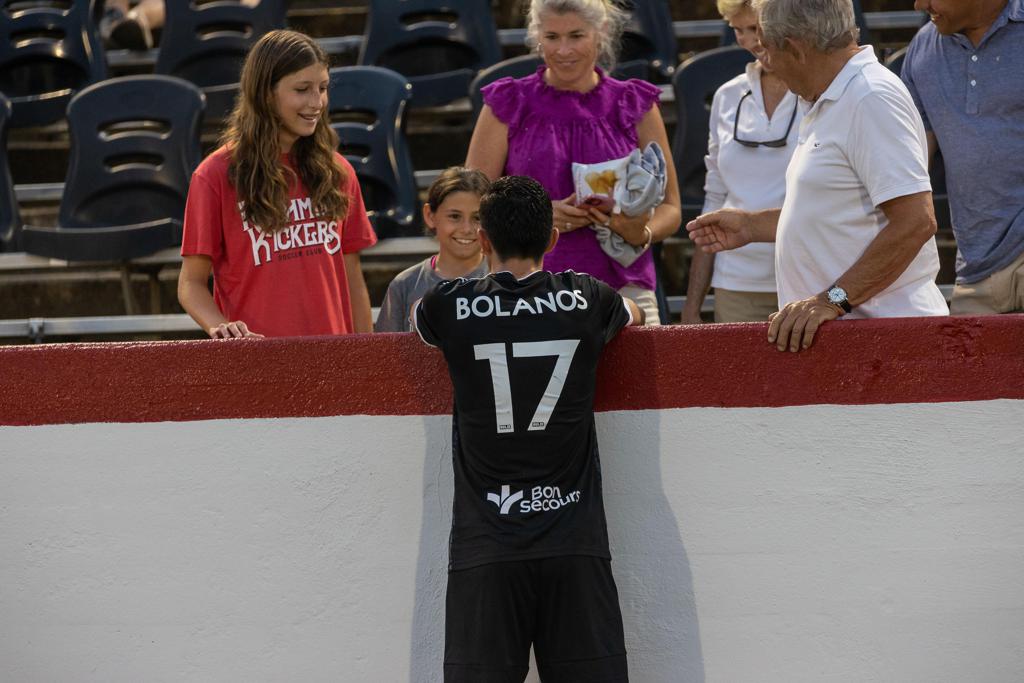
In Colombia, soccer is the dominant sport, unlike in the United States. Colombian soccer fans are die-hard supporters of their clubs like Deportivo Cali, Atlético Nacional, and Cali America as well as the national team. And if you’ve ever been into a tejadito — the equivalent of a bodega or bakery — you’ll know right away the love and pride they have in their teams as there are usually jerseys, scarves and other team memorabilia or knickknacks adorning the storefront.
“Soccer is the main thing in Colombia and that is one thing that truly brings people together and it brings a lot of happiness for Colombians to see their national team do well,” Bolanos said.
Bolanos, himself, is a big fan of James Rodriguez, a Colombian attacking midfielder who took the 2014 World Cup by storm, leading the team all the way to the quarterfinals to face tournament favorites, Brazil. Although Colombia’s journey would end against Seleção, Rodriguez would gain lasting fame, earning the FIFA Puskás Award for his incredible volleyed strike against Uruguay. The midfielder has been praised as the newest iteration of Carlos “El Pibe” Valderrama.
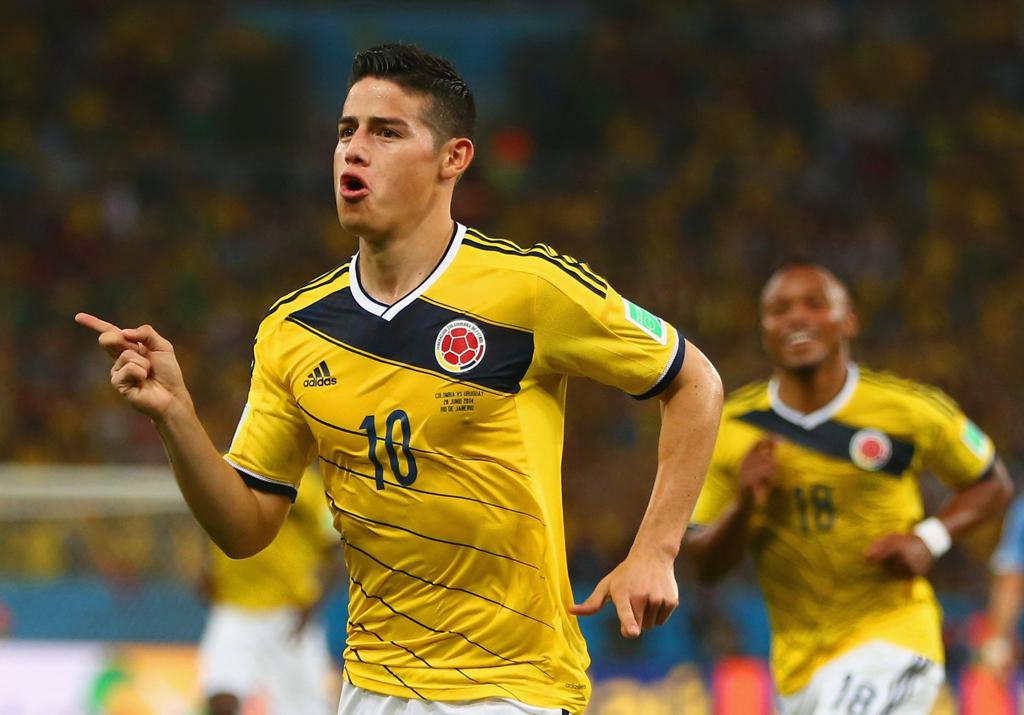
“He’s obviously a great player, and he’s done so much already for the national team at a relatively young age. I always have little fights with my dad because back in his day Valderrama was the best soccer player for Colombia at that time,” Bolanos said, “And people argue if it’s between him and James in terms of the best in national team history. So, it’s kind of like [the Argentines] comparing Maradona and Messi.”
Valderrama also played for the Miami Fusion, an MLS-expansion team that started in 1998 and lasted only several years. Nonetheless, Valderrama’s impact on soccer in South Florida and the Colombian culture in Miami was momentous.
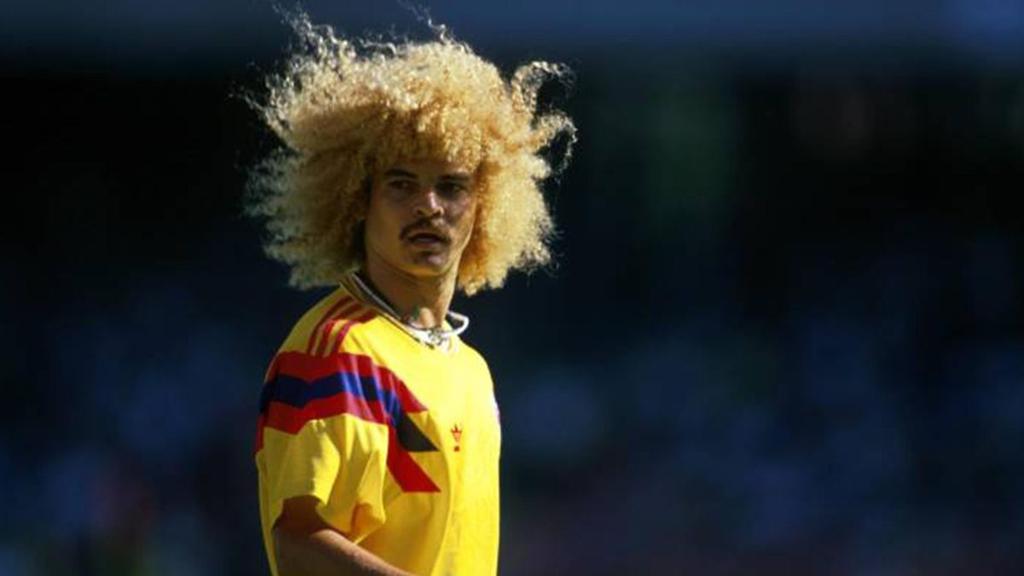
Growing up in South Florida also meant Bolanos played soccer all across the state. He is a slender-built winger weighing in at roughly 140 pounds and measuring 5 feet 10 inches, however, he thrives on the pitch by utilizing his technical dribbling abilities, off-the-ball movement, and pace to create chances and impact the game. Bolanos vividly remembers the differences between playing a team in Central Miami as opposed to a team in central or northern Florida as he was growing up.
“Even from an early age, having coaches that come from a Hispanic background, they emphasize that you have a lot of smaller players in size that are very technical compared to here, the bigger American players,” Bolanos said. “It was always funny growing up playing against the Jacksonville’s and the Tampa’s and the Bradenton’s and facing these big, predominantly American guys.”
Being born in the states, Bolanos was raised in a different culture than his father, Antonio Bolanos. Bolanos said his father came over to the states from Colombia at a young age and, like many other South Florida immigrants, had to assimilate into American culture, work and help support a family.
“One of the lessons that he instilled in me from a young age was that nothing in life is given, you have to earn everything. Learning that from a young age helped shape my character not only on the field but off the field as well,” Bolanos said.
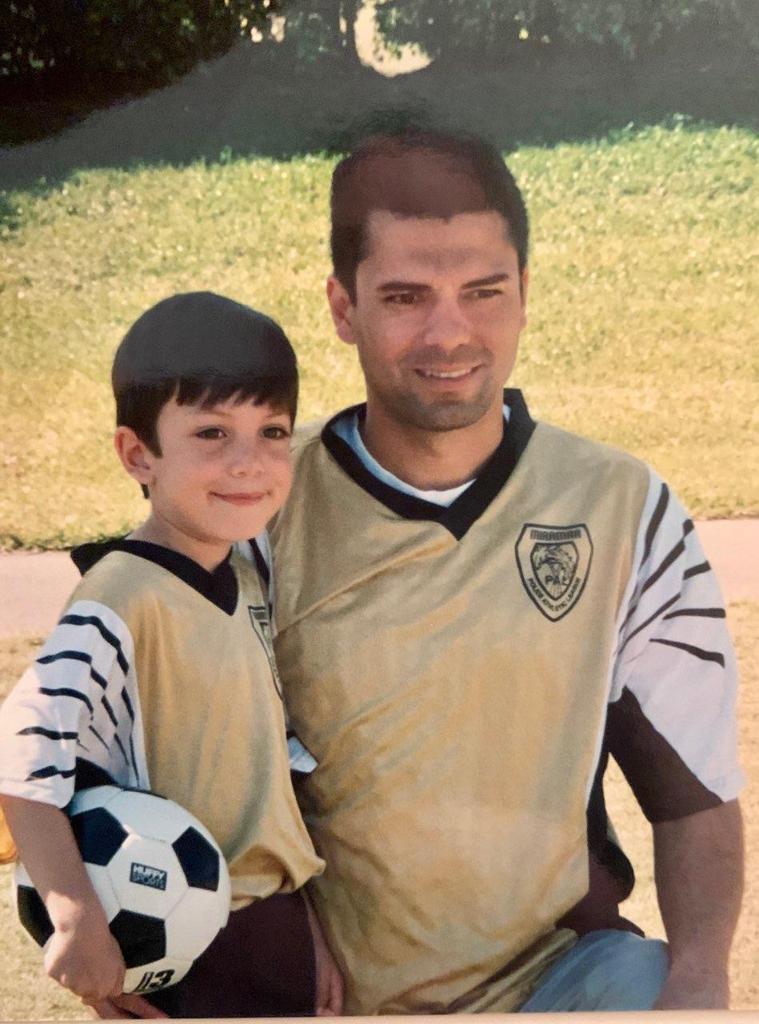
Although hard work ethic isn’t exclusive to Hispanic culture, it is a focal point in the livelihood and culture of Hispanic immigrants. Many Hispanic immigrants, especially in South Florida, came to the states in search of a better life.
The opportunity to create a new life and chase the American dream was motivation enough for Hispanic immigrants, and when those immigrants started families and raised children, they instilled the very same ethic and mental fortitude in their children.
“One thing that he told me from a young age was that if you have a dream or a plan for the future, to put everything you have into it and to never let up until that plan or dream has been accomplished,” Bolanos said.
Growing up as a Hispanic-American meant that you would assimilate into American culture in an entirely different way from your parents. Being surrounded by American culture and the English language from birth certainly played a crucial role in molding young minds and aided many in becoming bilingual speakers.
“Being bilingual just in itself has opened so many opportunities for me in terms of whether that’s meeting people — potentially setting stuff up for the future, or connecting with the community. Just little things like that have truly been special and help you realize how much being bilingual can go a long way.”
Bolanos often serves as the unofficial translator for the Argentine players in the squad like Zaca Moran, Hernan Gonzalez, and Emiliano Terzaghi who themselves are taking English lessons alongside the coaching staff who take Spanish lessons. Bolanos has come to cherish these interactions and makes the most of their bonding.
“Understanding their story, what it’s like over there in the Argentinian culture and comparing that to the American and the Colombian culture has been something that has really opened my eyes and made me look at things in a different way,” Bolanos said.
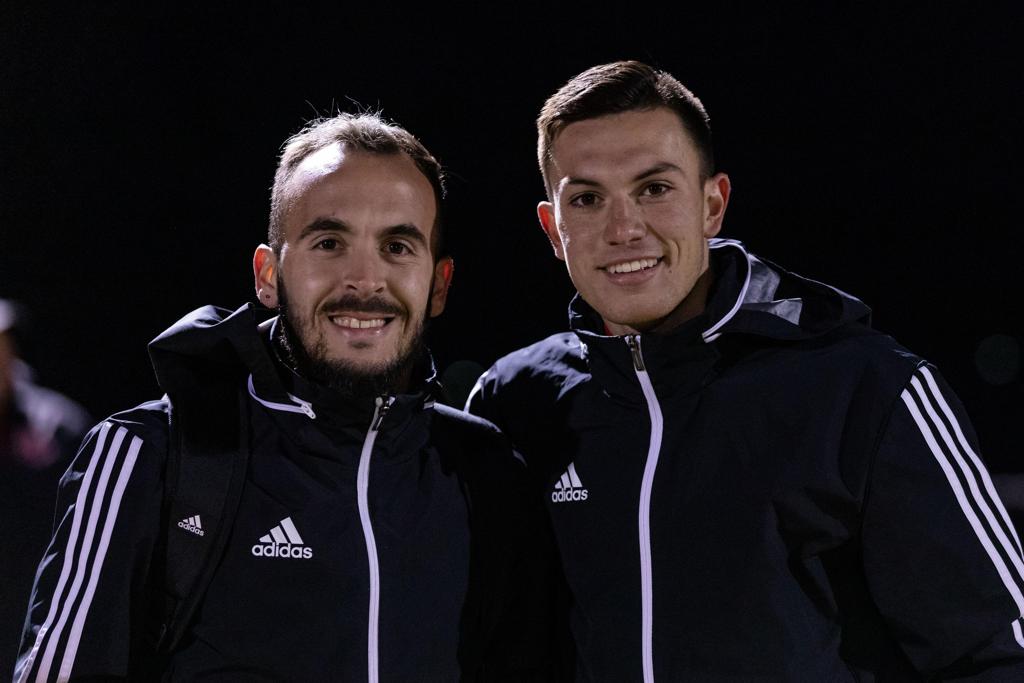
Being one of the Kickers’ interpreters and being bilingual in general has helped cultivate and strengthen bonds with different players on the teams. Players like Esteban Calvo from Costa Rica, or Juan Pablo Monticelli whose roots are in Texas, Mexico, and Argentina, as well as Gonzalez, Moran, and Terzaghi, have curated an extra bond within the team, adding additional layers of communication and chemistry to the squad.
“It’s definitely been nice to have your group of Spanish speakers that definitely can pull out the Spanish at any point if it’s during the game or in the locker room to talk about different things,” Bolanos said. “I think for us, it’s been so much easier to connect and play with each other because of that background and that culture.
“Technically, they’re all great players. And you can see that already, a resemblance from where they’re from on the field. Whether it’s Spanish or even in English as well, the way that we’re able to communicate and talk to each other and just understand each other has a huge role to play.”
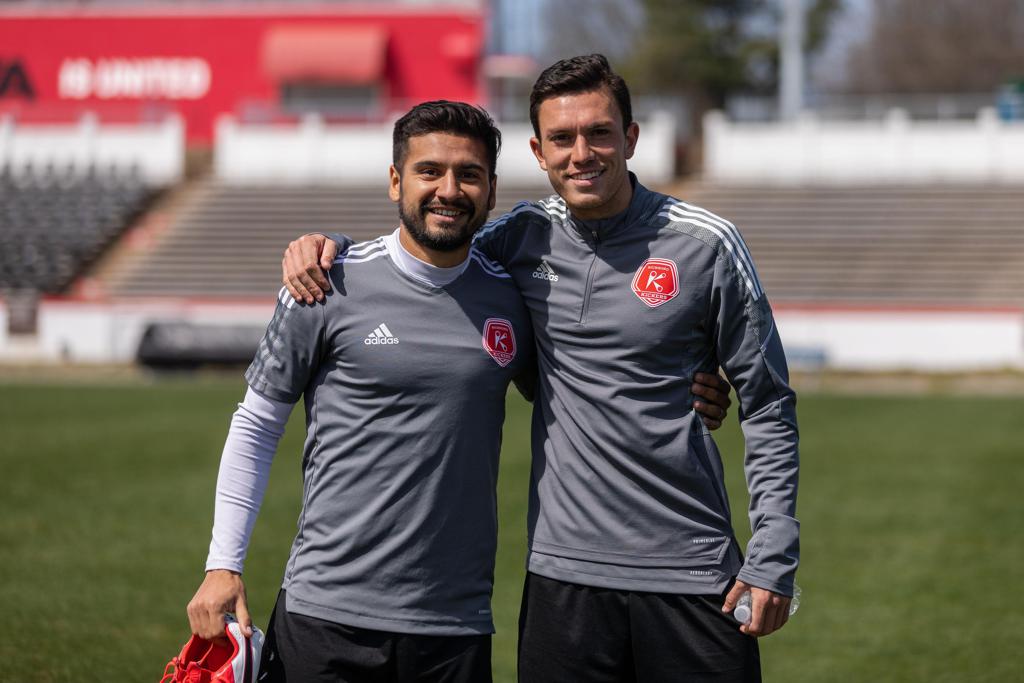
Bolanos draws direct links from his playstyle and growth in youth soccer in South Florida to his evolution as a collegiate and professional level player. According to Bolanos, much of his playstyle that you see on the pitch for the Richmond Kickers at City Stadium can be attributed to learning to play in systems popular amongst Hispanic coaches and players.
Despite spending his formative years playing soccer in Florida, Jonathan Bolanos ended up moving north to attend college and play for High Point University in North Carolina. Leaving his home and culture behind, Bolanos had his sights set on excelling as a player and student.
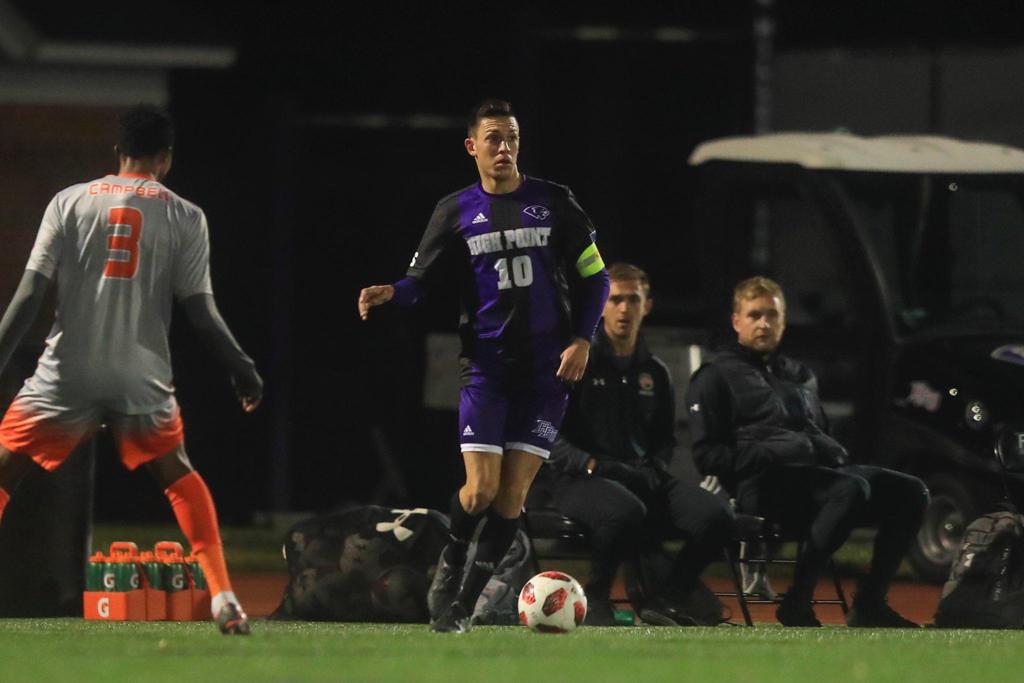
Before selecting High Point, Bolanos had traveled to North Carolina for an ID Camp that was taking place over the weekend. He was eventually asked to come on an official visit after the coaches spoke of his good performance. Motivated to have the opportunity to play for a D1 school, Bolanos worked his way into the team becoming a four-year starter, a feat he doesn’t believe was “projected for him.” Bolanos also earned All-Conference recognition in 2018 and earned a full-ride scholarship at High Point.
“I think [playing professionally] was always the dream,” Bolanos said. “I think in my second or third year of college, I realized my potential and that becoming a professional player was somewhat realistic. That’s when I really started to lock in and think that I could probably do this thing, becoming a pro and making this dream come true. Those last two years I worked my butt off and did well. Not only for myself, but for the team and for the university, and then I was able to get that contract shortly after.”
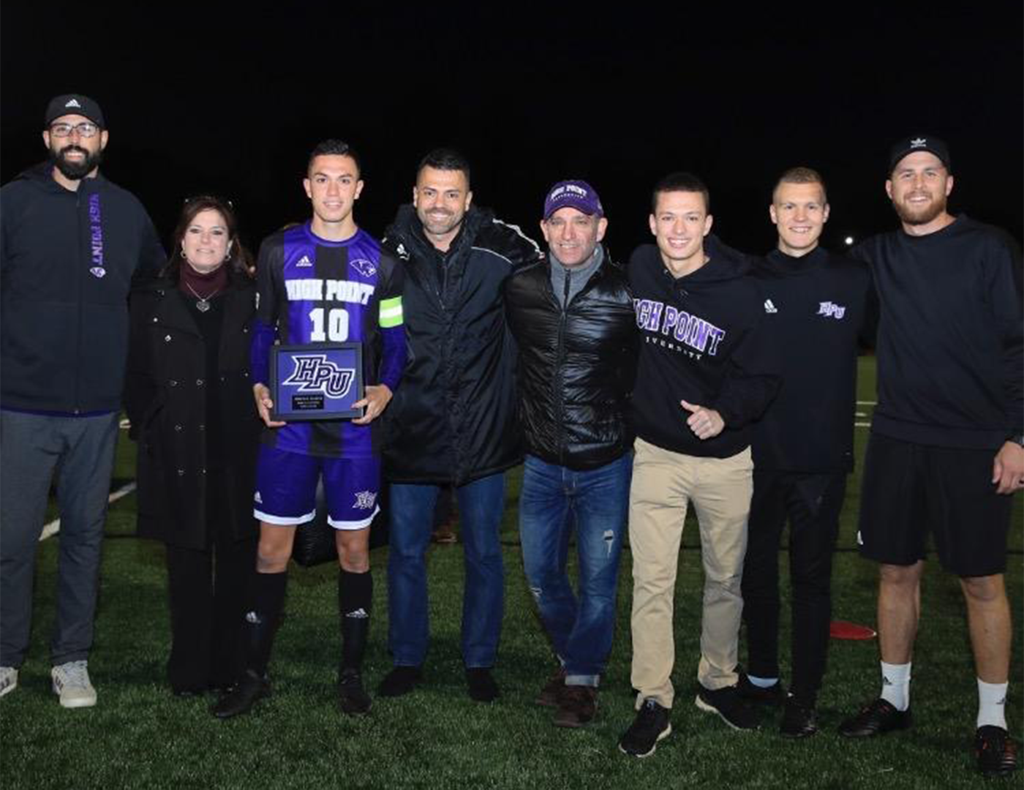
One game that stands out in Bolanos’ memories was his school record-tying performance against Winthrop University. Bolanos scored a hat-trick within the first half of the match, a feat already worthy of some deserved praise. He would score a fourth goal later in the second half of the match, a header nonetheless, which Bolanos claims was unusual for him.
“It was one of those nights that is obviously unforgettable, a really special moment in my college career,” Bolanos said.
Bolanos is incredibly grateful for his career trajectory and the fact that he is now playing in the USL League One, scoring goals broadcasted on ESPN+ on screens all over the country.
“Overall, it’s hard to put in words what this opportunity has been, but, apart from challenging, it’s truly been a blessing,” Bolanos said, “I think, coming from Pembroke Pines, which is not that big of a city, but with a great culture, I think it showed all of the young players down there and in South Florida that if you put your mind to something that you can achieve it with hard work and dedication.”
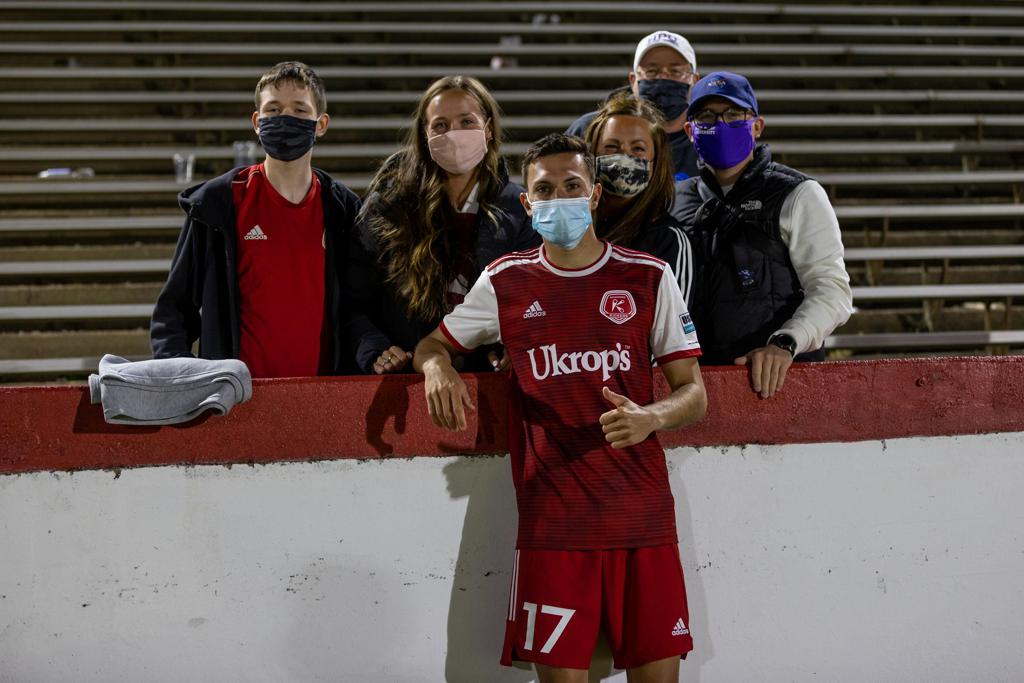
Bolanos can’t ever forget his roots, the dedication and hard work that his family put into starting a new life in a new country. The pride he takes in his Hispanic culture, the history of soccer in Colombia, what makes him uniquely Jonathan Bolanos, it’s all a part of his very dangerous arsenal on the pitch.
“It also shows all the Hispanics as well, that, if you implement your culture on the field and show that technical ability that you have, then you can get far,” Bolanos said. “And really just always showcase and let that culture grow. I think that’s something that’s carried me along this whole way.”






















































































































































































































































































